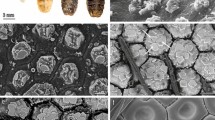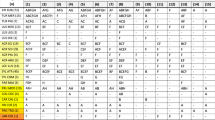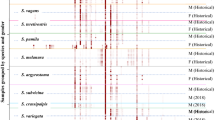Abstract
A CONSIDERABLE amount of information concerning the hæmolymph composition of pterygote insects is available; but nothing has been known about the hæmolymph composition of any apterygote insect.
This is a preview of subscription content, access via your institution
Access options
Subscribe to this journal
Receive 51 print issues and online access
$199.00 per year
only $3.90 per issue
Buy this article
- Purchase on Springer Link
- Instant access to full article PDF
Prices may be subject to local taxes which are calculated during checkout
Similar content being viewed by others
References
Croghan, P. C., J. Exp. Biol., 35, 219 (1958).
Parry, G., J. Exp. Biol., 30, 567 (1953).
Croghan, P. C., Proc. Roy. Phys. Soc. Edin. (in the press).
Lockwood, A. P. M. (unpublished).
MacRobbie, E. A. C., and Dainty, J., Physiol. Plant., 11, 782 (1958).
Croghan, P. C., and Lockwood, A. P. M. (in preparation).
Author information
Authors and Affiliations
Rights and permissions
About this article
Cite this article
LOCKWOOD, A., CROGHAN, P. Composition of the Hæmolymph of Petrobius maritimus Leach. Nature 184, 370–371 (1959). https://doi.org/10.1038/184370b0
Issue Date:
DOI: https://doi.org/10.1038/184370b0
Comments
By submitting a comment you agree to abide by our Terms and Community Guidelines. If you find something abusive or that does not comply with our terms or guidelines please flag it as inappropriate.



